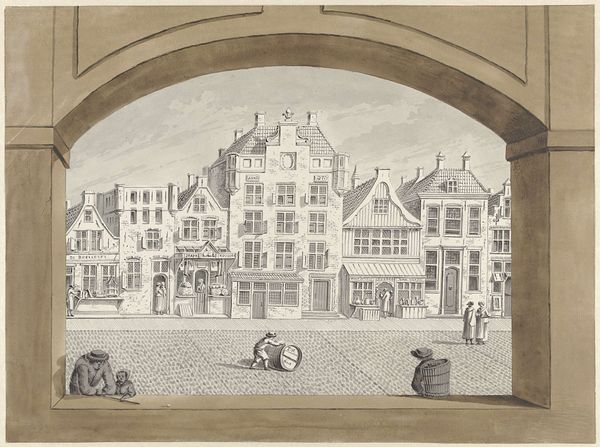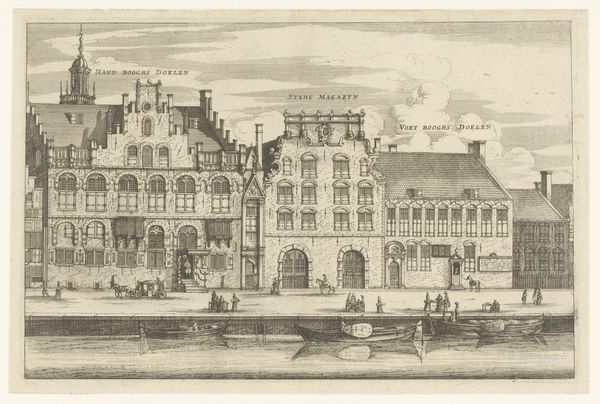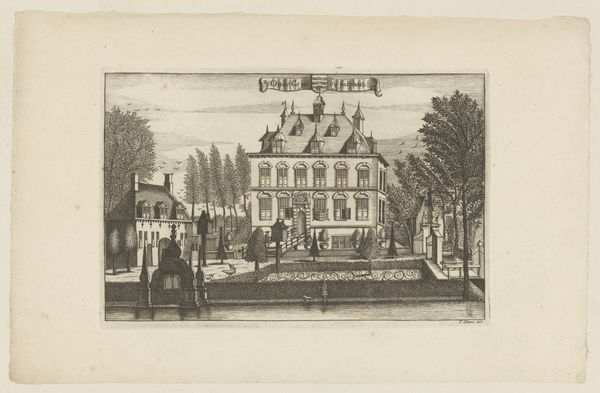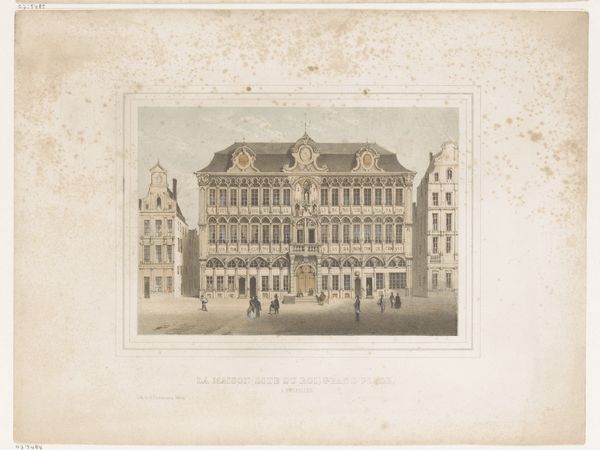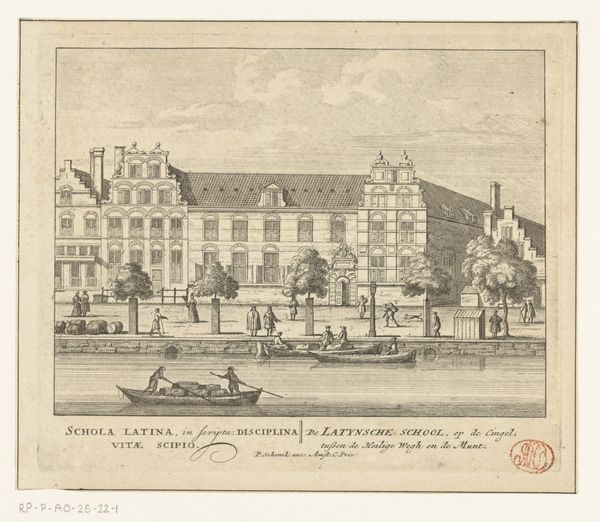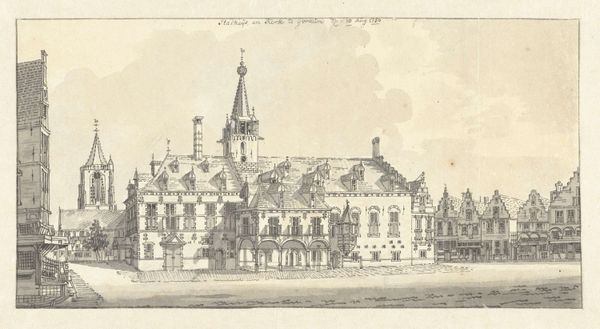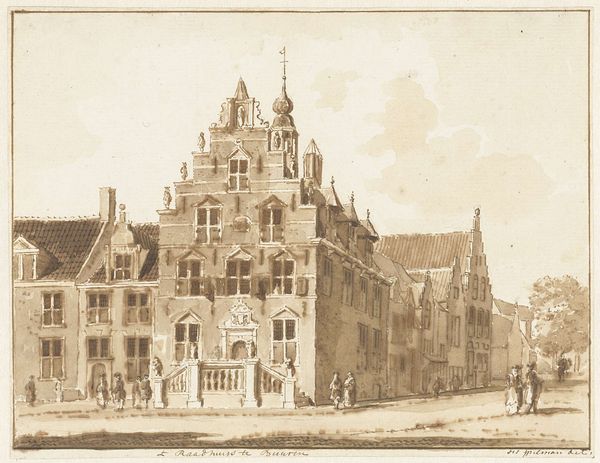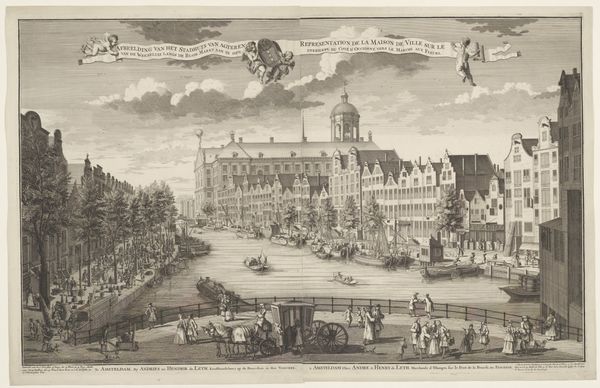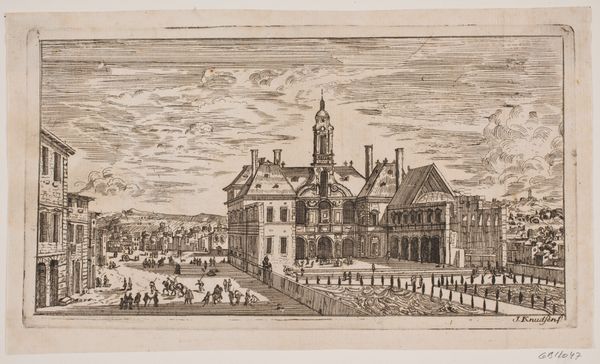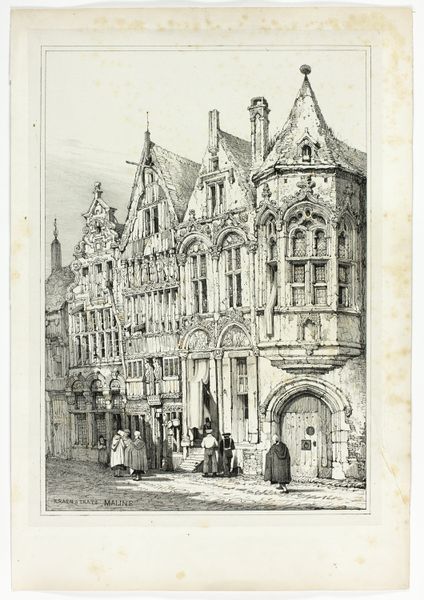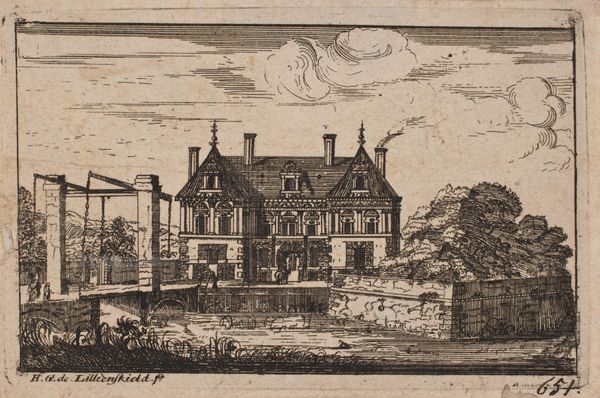
drawing, etching, paper, ink, architecture
#
drawing
#
dutch-golden-age
#
etching
#
etching
#
paper
#
ink
#
architecture drawing
#
cityscape
#
architecture
#
realism
Dimensions: height 333 mm, width 447 mm
Copyright: Rijks Museum: Open Domain
Curator: Dirk Verrijk created this etching titled "Het huis Hogelande in Middelburg" sometime between 1744 and 1786. Editor: There’s something inherently tranquil about the composition; even the muted color palette exudes a certain calm. But, that precise rendering of the architectural details seems almost obsessive. Curator: Indeed. This piece functions almost as a cultural document, capturing a very specific place and time in Middelburg’s history. Hogelande House, centrally positioned, likely held significant importance to the community. Note how the artist frames the entire scene within an archway, pulling the viewer into this contained world. The etching process, with its careful rendering, suggests meticulous planning and labor. Editor: You see the framing as symbolic; I’m thinking about the material reality. Creating such detail with etching required immense skill, patience, and access to quality materials, from the copper plate to the inks and paper. How accessible would prints like this have been? To whom? Curator: Access would have certainly been tied to class, yet these cityscapes were often purchased as symbols of civic pride. Considering Verrijk's detailed focus, each window, brick, and tile resonates with meaning; together, they reflect the values of order, prosperity, and civic pride deeply embedded in Dutch Golden Age culture. Think of these images as potent emblems circulating shared cultural beliefs. Editor: Exactly! And what was the etcher paid for it? Whose labor are we consuming when we look at this so-called beautiful rendering of a perfect cityscape? Did that soldier at the left corner have to work hard, or did he just get lucky that he could carry a rifle for the colonizers? Curator: Your focus on the unglamorous realities reminds me that even depictions of prosperity were not without shadows, that, even while the artist portrays civic order, social strata are reinforced in the details. Thanks for pointing that out! Editor: Of course. And to remember: what’s captured and considered ‘art’ is rarely accidental, but usually very telling.
Comments
No comments
Be the first to comment and join the conversation on the ultimate creative platform.

